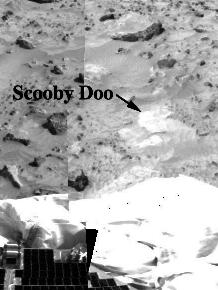Scooby Doo.
Click on image for full size
Image from: JPL/NASA
Scooby Doo
The rock shown here was named Scooby Doo. It was a pink rock, which means it is probably coated with drift deposits which have been cemented together. This rock is similar to what was found at the Viking 2 landing site.
The action of the Rover's rear wheels was used to expose soil. Near Scooby Doo, the Rover could not dislodge any soil. Thus scientists labeled the soils near Scooby Doo as cemented soil.
You might also be interested in:
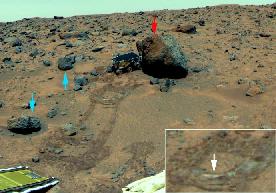
The rocks explored by the Mars Pathfinder's Rover have been classified into three kinds by scientists analysing the Rovers' findings. Potentially the rocks may all be the same kind of rock, all having
...more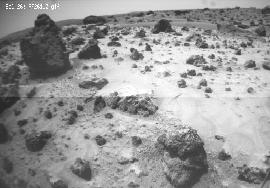
This image shows the rock called Pooh Bear. Soil found near Pooh Bear seemed to be a clumpy kind; finely grained, cloddy, and rocky. This was different from the soils found near the rock Scooby Doo, which
...more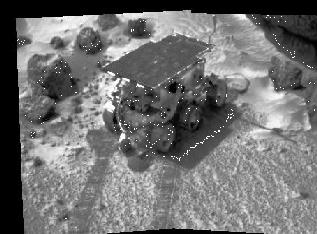
One of the measurement objectives of the Mars Pathfinder mission was the examination of the composition and structure of the soil. As the Rover traversed the surface exploring the rocks of Mars, it also
...more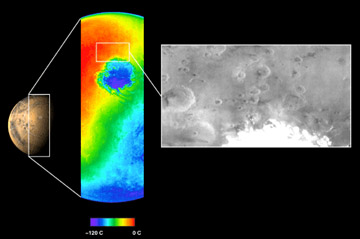
The Mars Odyssey was launched April 7, 2001, from Cape Canaveral Air Force Station in Florida. After a six-month, 285 million-mile journey, the Odyssey arrived at Mars on October 24, 2001 (02:30 Universal
...more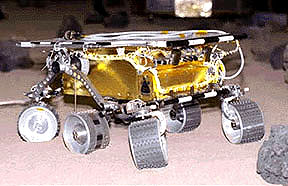
The Mars 2005 mission is still in the planning stages. It is set to launch in the year 2005.
...more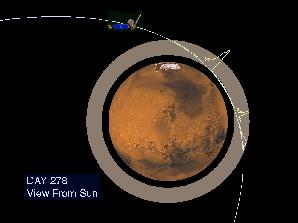
On September 12, 1997, the Mars Global Surveyor successfully entered a highly elliptical orbit around Mars. To get into the near-circular, near-polar, low-altitude orbit necessary to map the surface of
...more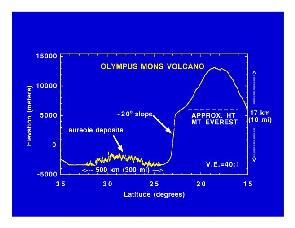
Mars Global Surveyor carries an instrument which measures the altitudes of things. The instrument is called an altimeter, or "altitude-meter". The graph to the left shows the results returned from Mars
...more


